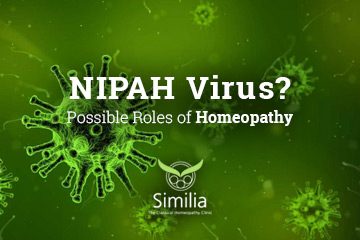
STUDY REPORT SUBMITTED BY THE EXPERT COMMITTEE APPOINTED BY IHMA KERALA TO IDENTIFY A PROBABLE HOMOEOPATHIC GENUS EPIDEMICUS FOR THE CURRENT VIRAL EPIDEMIC – 2018 – IN KERALA. (THE REPORT WAS FORWARDED TO DMO, DEPARTMENT OF HOMOEOPATHY, KOZHIKODE.)
Expert committee members:
Dr.Saji K, MD(Hom) Repertory. (Senate Member KUHS.)
Dr.Dinesh.R.S, MD(Hom) Materia Medica; MBBS, MD(Psychiatry); Psychiatrist, Mental Hospital Trivandrum.
Dr.Siju Joseph Seena, BHMS; MSC Epidemiology, Consultant Epidemiologist.
Dr.Amar Bodhi, MD(Hom) Organon; Lecturer, B.R.Sur Homoeopathic Medical College, New Delhi.
Introduction:
In the last few years, pre monsoon viral fevers took the life of a considerable number of patients in our state and in spite of adequate preventive measures from the part of the government health authorities, newly emerging epidemics lead to a threatening situation each year. Homoeopathy always played its part in such circumstances and the role of both government and private doctors in those situations was really commendable.
As Homoeopathic system has a unique method of finding out the preventive medicine by selection of genus epidemicus (GE) on the basis of collective symptomatology (including pathology) of the patients, there is always a hope even in newly emerging epidemics. This is an attempt to find out a GE for the current viral epidemic encephalitis.
IDENTIFICATION OF GE, STEP 1 – COLLECTION OF SYMPTOMS FROM PATIENTS.
As direct interaction with the patient was not allowed, information about the patient’s symptoms were obtained from patients caregivers, treating physician and literature on Nipah epidemic in past.
SYMPTOMS COLLECTED FROM PATIENTS:
PATHOLOGICAL – FROM REPORTS:
IDENTIFICATION OF GE, STEP 2 – FINDING OUT A PROBABLE SIMILIMUM FOR THE SYMPTOMS.
REPERTORISATION:
RUBRICS:
REPERTORIAL RESULT:
Ars: 24/9
Bell: 20/9
Lyc: 17/9
Rhus tox: 20/8,
Hyos: 18/8,
Bapt: 17/8,
Bry: 17/8,
Nat-mur: 17/8,
Puls: 17/8,
Nux vom: 16/8,
Arn: 15/8
Phos: 15/8
PATHOLOGICAL CONSIDERATION:
Ars and Bell are the Final medicines.
DIFFERENTIATION OF THE FINAL MEDICINES:
Plus points for Bell.
Plus points for Ars
FINALLY SELECTED MEDICINE: BELLADONNA.
PROPOSED DOSAGE:
Day 1 to 5: Bell 200/bd
From Day 6 onwards 1 dose of bell 200 every 3rd day until the epidemic subsides.
1 dose = 2 Number 40 medicated pills
SPECIAL ADVISES:
Any person who is taking the medicine should stop the medication if any adverse symptoms appear.
Since the GE is only a proposed medication, any person who is on GE should follow the protocol on fever proposed by the health authorities. The GE offers no guarantee but there is chance for prevention (provided that the individual is not already infected) as observed in earlier preventive medicine study examples.
Informed consent should be obtained before giving the GE.
CONCLUSION:
Since the current infection has almost 100 percent case fatality rate and as there is no available treatment except supportive care, we propose this homoeopathic GE for administration to contain the epidemic. GE is a time tested Homoeopathic method of prevention of epidemic and has yielded positive outcome in many previous epidemics.
REFERENCES: